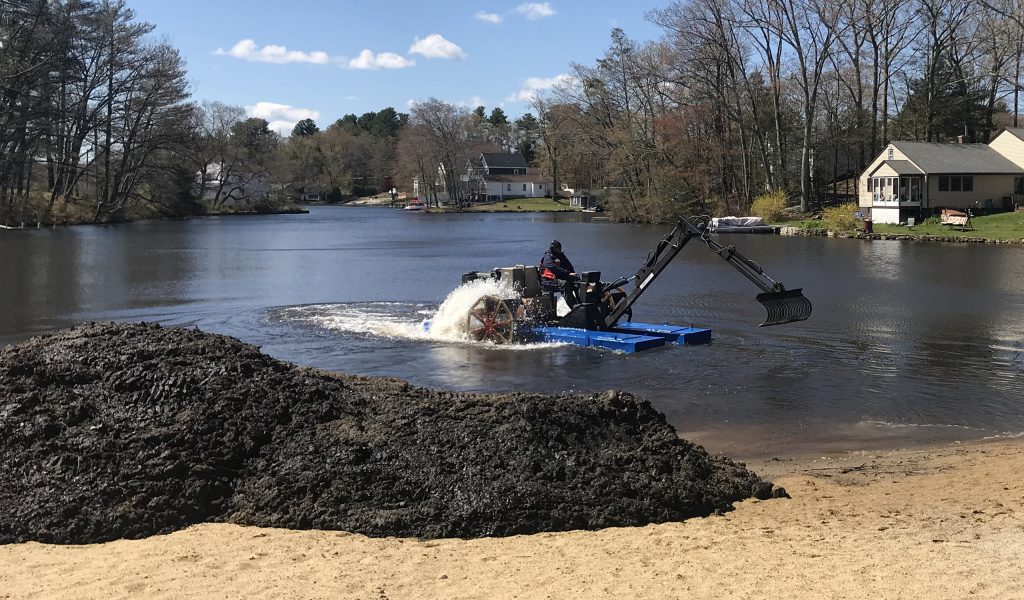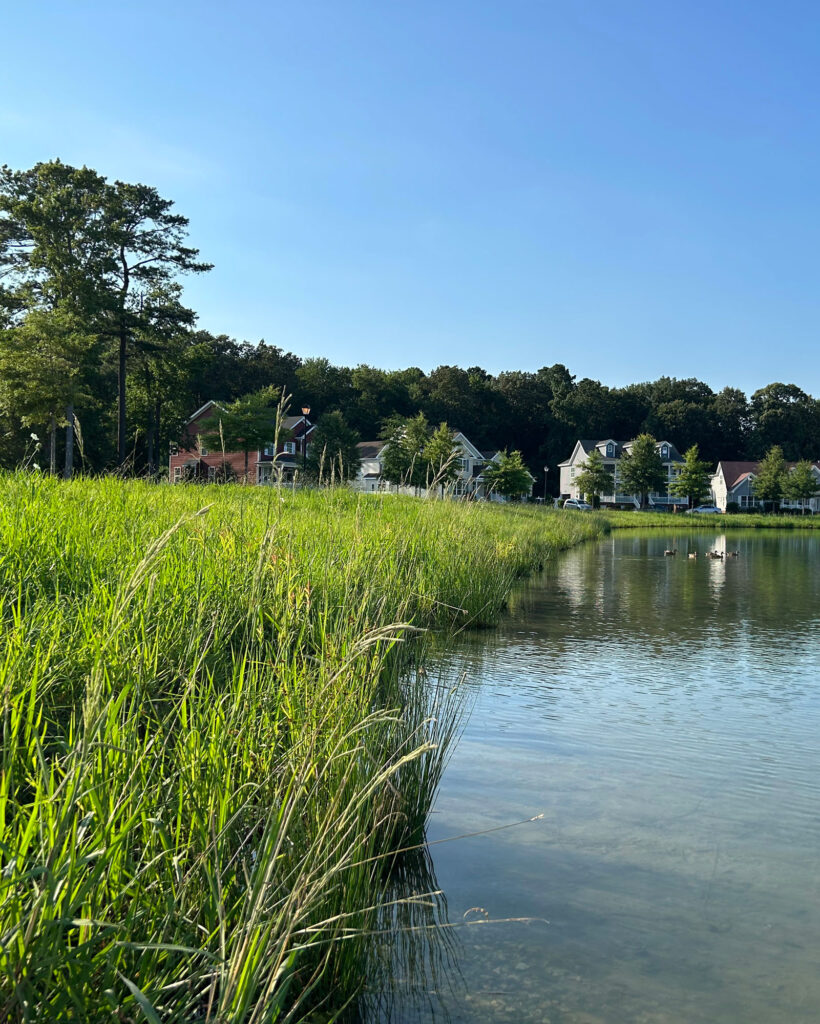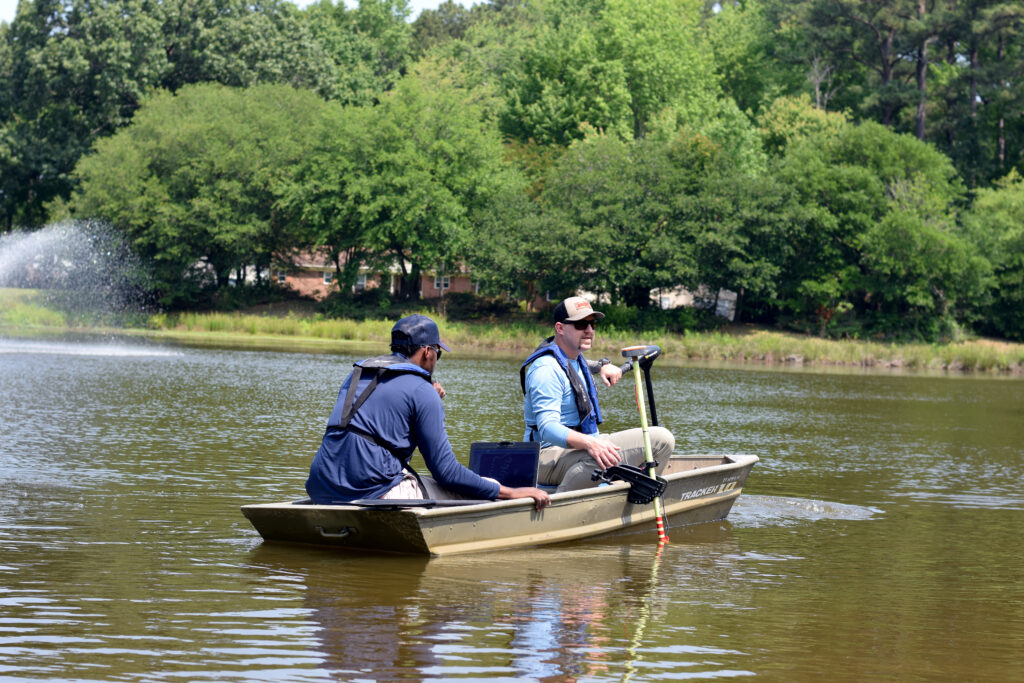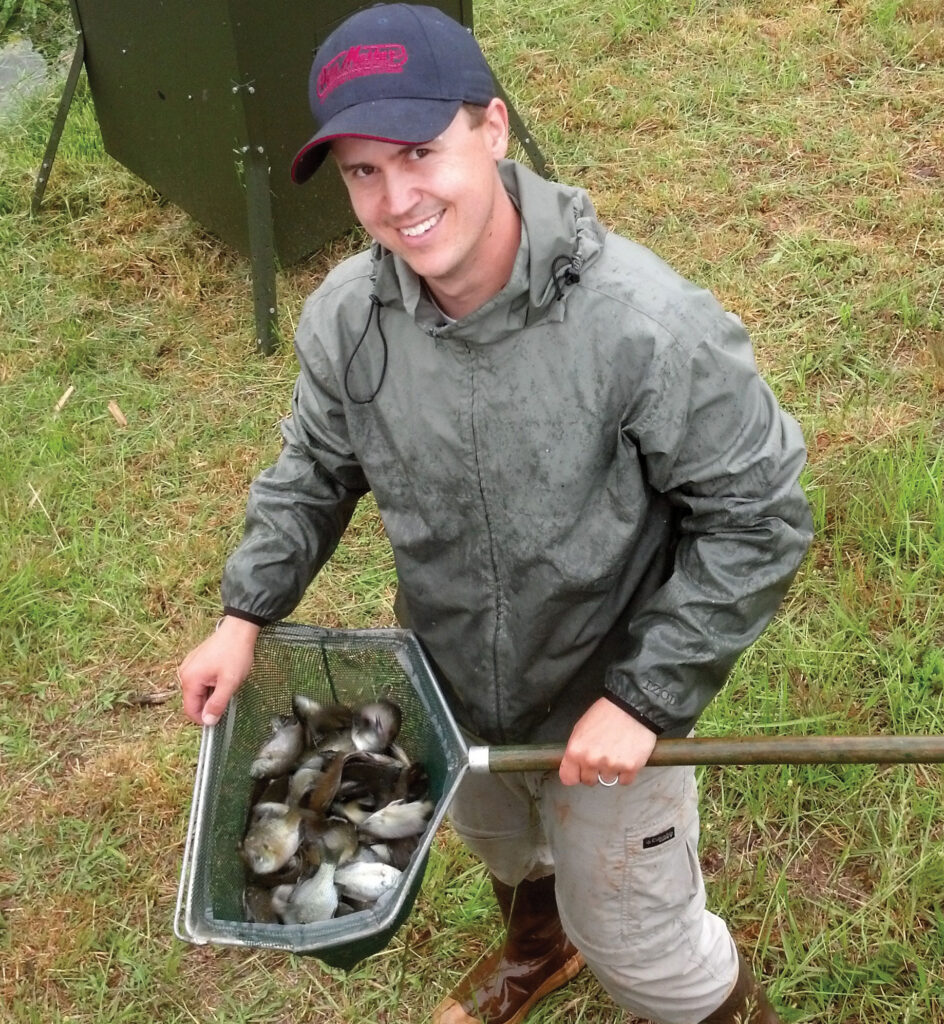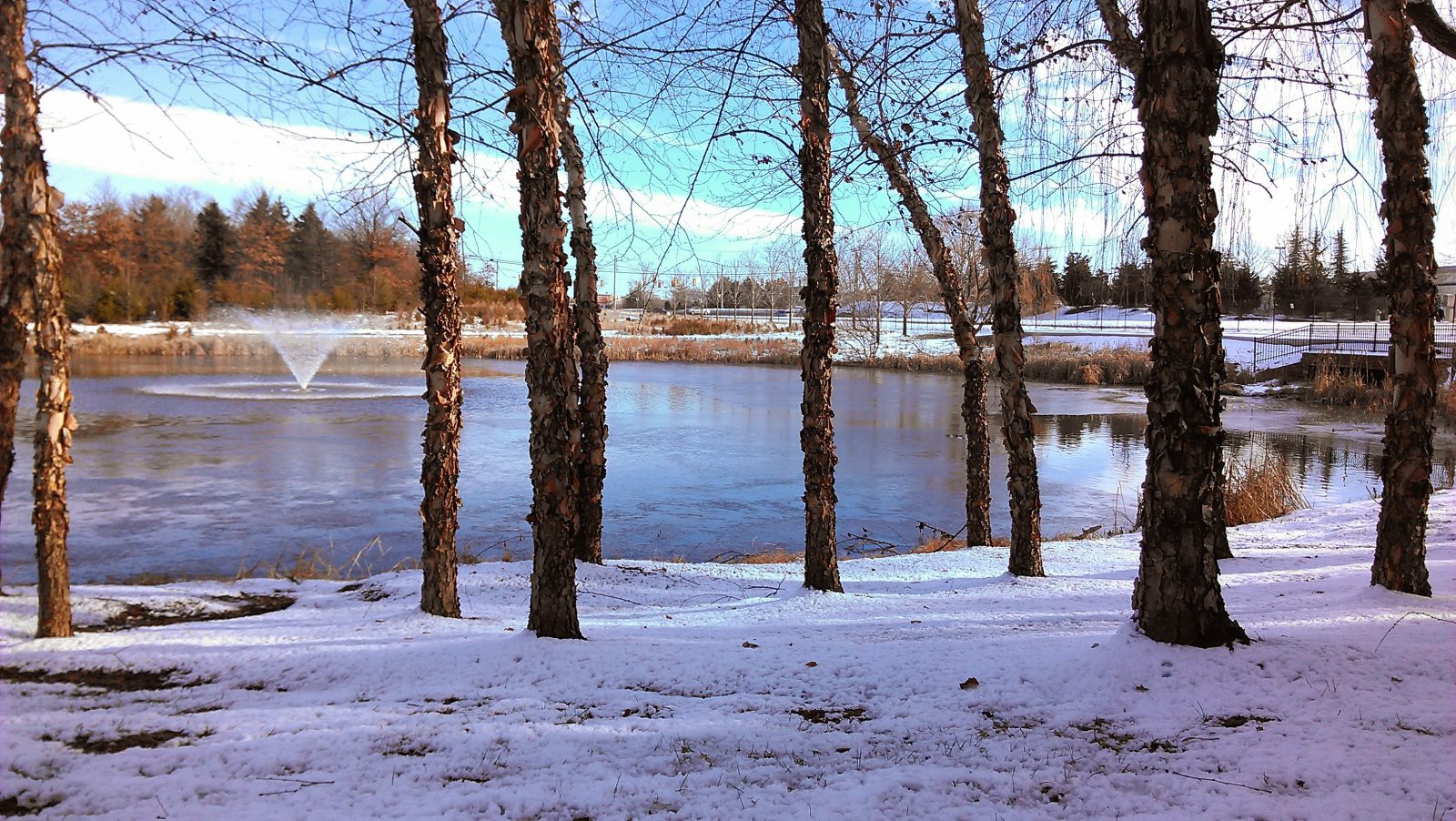
Winter Pond Maintenance: How to “Winterize” Your Lake, Pond or Fishery
The hard work you put in to maintain the health and beauty of your community lake, stormwater pond or trophy fishery throughout the summer can be quickly diminished come winter; however, many “winterizing” strategies can be utilized to help set your property up for continued success in the coming year. In addition to being a wonderful time to reflect on your goals for your waterbody, winter is also an excellent season to explore new technologies that help you learn more about the unique characteristics, needs and long-term outlook of your lake or pond.
“Winterizing” practices can vary throughout the country and may differ depending on the size of your waterbody and how it’s used. However, a general rule of thumb is to begin the process as soon as your water temperatures consistently fall below 60 degrees. In the Northeast, this often occurs between October and November. Individuals in the South and Southwest can expect these temperatures around January and February.
Follow the tips below to ensure your water is prepped for winter and can thrive come spring!
1. Combat nutrient loading
Poor water quality and algae blooms throughout the warmer months are often a result of excess nutrients like phosphorus and nitrogen. Fall and winter are a perfect time to perform nutrient remediation. Nutrient remediation solutions like Phoslock and Alum can be used to naturally balance the water column by binding to nutrients and sinking them to the bottom sediments where they can no longer fuel nuisance conditions.
Nutrient management solutions
Phoslock (1) is a lanthanum-modified clay best used in waterbodies that suffer from chronic nutrient loading. Alum-or aluminum sulfate works similarly and is an effective solution for highly turbid water. Another solution called EutroSORB (2) provides the same benefits to lakes, ponds, and waterways that experience lots of water movement.
EutroSORB is a filtration technology designed to rapidly capture phosphorus from the water column. It is most effective in areas of moving water such as stormwater ponds, streams, and canals. Once the filter is full, it is physically removed from the waterbody for off-site disposal. This product is also available in an aqueous form called EutroSORB WC. This technology can be applied via surface spray application, subsurface injections, or poured into areas with significant water mixing like pipes and intakes.
2. Remove organic debris
If your waterbody tends to suffer from problematic algae and nuisance or invasive weed infestations during the warmer months, winter weather may provide a sigh of relief. Unfortunately, if proper management techniques are not utilized as algae and weeds die off from the cold, they could return with a vengeance the following spring. This is because as plant matter decomposes, it releases nutrients into the water that can fuel new growth when temperatures warm up. Consider utilizing a hydro-rake during this dormant phase to physically remove this matter, as well as tree branches, garbage and other nutrient sources to reduce the accumulation of bottom muck and prevent nutrient levels from becoming excessive before spring arrives.
3. Trim your pond buffer
While internal nutrients often come from decomposing plant matter, excess nutrients can also be swept into your pond during rainstorms. A beneficial vegetative buffer is key to preventing nutrient-rich runoff from negatively affecting the waterbody, but as buffer plants die in the cold, they are also at risk of contributing to the nutrient load.
Each winter, be sure to trim your buffer and properly dispose of trimmings. We recommend trimming your buffer plants to 18 inches in height and allowing them to extend 3-5 feet or more from the shoreline. Also be sure to remove any woody vegetation or non-native plants, as they can lead to costly erosion problems, damage to pond structures, and loss of vistas and shoreline habitat.
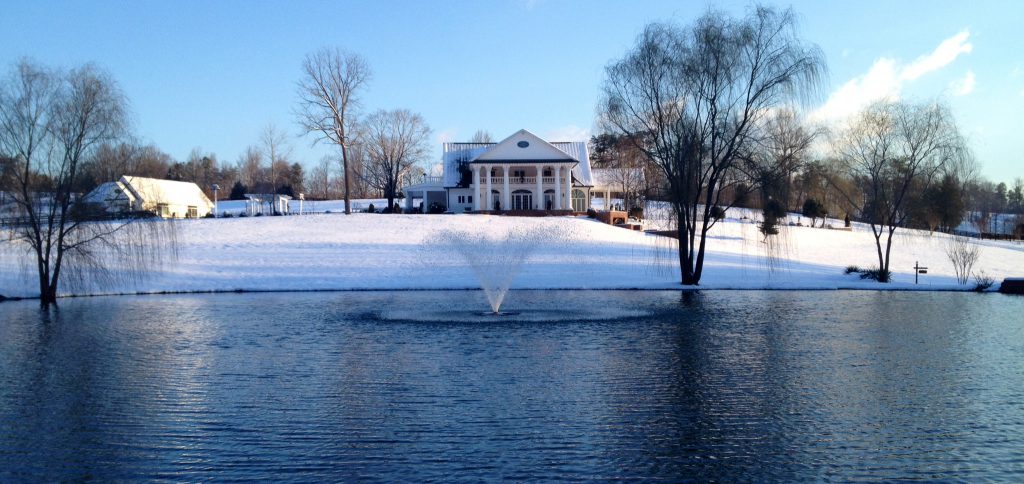
4. Increase oxygen and water flow with aeration
Just like in the summer months, winter pond aeration is critical to increase dissolved oxygen levels, prevent fish kills, and create water quality conditions that destroy excess nutrients responsible for fueling algae growth. Depending on the depth and shape of your waterbody, a floating fountain or submersed diffused aerator can provide these benefits all winter long.
Fountain and aeration solutions for winter
While it’s common for property owners in the Northeast and parts of the Mid-Atlantic to remove their floating fountains during the winter, it is not necessary when these aeration systems are used simultaneously. Bottom-diffused aerators can be placed directly under a fountain to prevent the water above from freezing around the equipment. This coupling of aeration systems will keep your beautiful fountain running all winter long, and will also provide a dramatic increase in water quality throughout the entire water column.
5. Perform bathymetric surveys
Winter is often the best time to perform lake mapping surveys in your waterbody because vegetation and recreation are less likely to interfere. GPS surveys and bathymetric studies are two tools that can be employed to identify possible erosion problems, inspect structural components and uncover areas of major sediment accumulation.
How lake mapping data can help improve your management plan
The data gained from these surveys is often critical to helping create an informed long-term management plan for the waterbody and develop solutions for problems before they get too far out of hand. Likewise, lake mapping surveys can help you budget for and even take steps to prolong the need for dredging, which is often one of the costliest pond management expenses a homeowner or community will ever face.
6. Introduce fish and assess habitat structures
Fisheries management is very temperature-driven, so many fisheries tasks are most effectively completed in the winter. In the South and Southwest, winter is an excellent time to stock mosquitofish, which can help reduce mosquitoes come spring, as well as tilapia, which will serve as food sources for game fish throughout the cooler months. In the Northeast and Mid-Atlantic, it’s not too late to stock Rainbow and Brown trout, which thrive in cool water and provide great fishing until spring. Across the country, winter is also a great time to assess fish habitat and the need for and location of natural or artificial fish cover installations. For guidance on fish cover options and placement, consult with your Fisheries Biologist.
Lake and pond care should happen year-round
Even in the winter, lakes and ponds provide a beautiful backdrop for wildlife to utilize and communities to enjoy through fishing and recreation. As fall turns to winter, maintenance responsibilities may change, but they do not end. Contact your lake management professional today to learn more about the tools available to position your waterbody for continued success!
Maintain Healthy Water for Years to Come
Contact Us Today
Call 888-480-5253 or complete the form below to speak to a pond management expert about winterizing your pond.
1. Manufactured by PET Water Solutions
2. Manufactured by SePRO
SOLitude Lake Management is a nationwide environmental firm committed to providing sustainable solutions that improve water quality, enhance beauty, preserve natural resources and reduce our environmental footprint. SOLitude’s team of aquatic resource management professionals specializes in the development and execution of customized lake, pond, wetland and fisheries management programs that include water quality testing and restoration, nutrient remediation, algae and aquatic weed control, installation and maintenance of fountains and aeration systems, bathymetry, shoreline erosion restoration, mechanical harvesting and hydro-raking, lake vegetation studies, biological assessments, habitat evaluations, and invasive species management. Services and educational resources are available to clients nationwide, including homeowners associations, multi-family and apartment communities, golf courses, commercial developments, ranches, private landowners, reservoirs, recreational and public lakes, municipalities, drinking water authorities, parks, and state and federal agencies. SOLitude Lake Management is a proud member of the Rentokil family of companies in North America.









